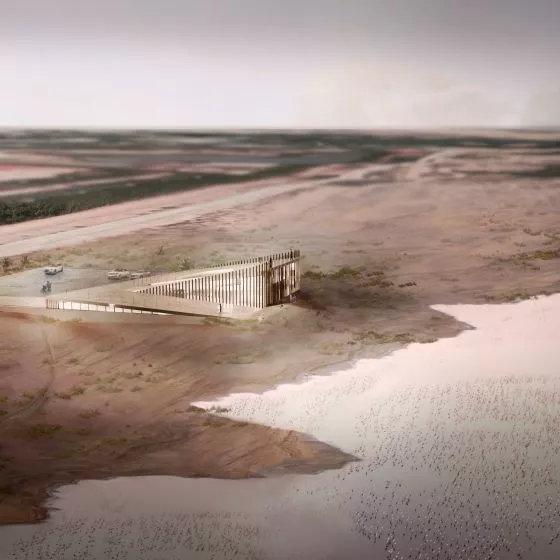Julia Zasada, an architecture graduate of the Poznan University of Technology, created the design of the Embassy of the Czech Republic in Ethiopia. The modest form of the building combines the most important principles of security with the cultural heritage of both countries. The work made it to the finals of this year's Zbyszek Zawistowski "Diploma of the Year" Award.
The design of the Embassy of the Czech Republic in Addis Ababa is a diploma thesis carried out at the Faculty of Architecture of Poznan University of Technology under the direction of: Katarzyna Słuchocka, PhD. The concept is an example of a building that combines the most important principles of security with preservation of national identities and respect for the cultures of both countries. The author presented the use of architectural solutions that allow to create a facility in accordance with the principles of aesthetics, accessibility and security.
The embassy complex is divided into five facilities
© Julia Zasada
In Julia Zasada's words:
Today's world is increasingly stigmatized by terrorist attacks and a growing sense of fear. Architecture, facing increasing global danger, is constantly undergoing a process of evolution. Architects of today's diplomatic missions must therefore reconcile aesthetic responsibilities with the stringent requirements imposed by security specialists.
fusion of cultures
The Czech diplomatic post in Ethiopia refers to the architectural achievements of both nations. When designing the embassy complex, Julia Zasada sought to link Ethiopia's geometrically modernist architecture with the Czech cultural heritage. The geometric patterns characteristic of Czech cubism were modified by the architect on the basis of Ethiopian national symbols - the star. The designed forms appear mainly in the form of richly carved, sharply beveled building facades and interior elements. With highly decorative reliefs, the building mass es have been reduced to modest forms with indistinguishable heights.
Geometric patterns of facades and ceilings referring to the Ethiopian star
© Julia Zasada
one embassy, four buildings
The irregular shape of the plot and the location in a residential and business district, resulted in dividing the project area into two disproportionate parts. The larger one - intended for the embassy complex, and the smaller one - for housing for local employees. The placement of social buildings dictated an Ethiopian regulation to support local workers. The introduction of an internal road delineated security zones determined by the pattern of operation of diplomatic missions.
The architect distinguished public and private zones, which were divided into administrative and office and residential areas. The separation of the various spaces resulted in the breaking up of the embassy complex into four independent buildings: the embassy headquarters, the consulate, the ambassador's residence and staff apartments. The facilities were placed in different parts of the plot, taking into account the maintenance of safe distances. The embassy headquarters and consulate are located on the main road. Heading to the western side of the plot, the zone becomes more private and inaccessible to third parties. This part contains residential buildings, including the ambassador's residence, and recreational areas for residents of the complex.
The interiors are minimalist with plenty of natural light
© Julia Zasada
green areas
When designing the spaces between the buildings of the complex, the author focused primarily on creating extensive green areas. This decision was also prompted by Ethiopia' s environmental campaign and its tree planting efforts. A large part of the plot was planted with trees, which additionally form a retaining wall and low vegetation, which separates the public and private spaces thanks to the height differences of the land. The garden surrounding the buildings gently permeates their interiors, which is a continuation of the interior spaces.
design process of the embassy complex
© Julia Zasada
invisible security systems
The Czech Embassy building is designed with security systems that are unnoticeable at first glance. The landscaping created in the pattern of embankments restricts free movement through the complex - it is possible only along designated paths. Tall trees and concrete fencing provide the first line of defense, while low vegetation camouflages electric alarm posts. Extensive staircases and ramps limit unexpected intrusion of an intruder into the buildings. As the author writes, modern diplomacy is "a product and reflection of reality," and the embassy's design only subtly reflects our present. Despite the use of the aforementioned security systems, the building remains open and welcoming.
The project is in the finals of this year's Zbyszek Zawistowski "Diploma of the Year" Award, the results of which will be announced in October. In addition to Julia Zasada, the nominees for the award include: Adriana Sowa with her Herbarium project and Marta Stachurska, who created the project Museum of Culture in Matera.
compiled by Dobrawa Bies
illustrations courtesy of Julia Zasada
































